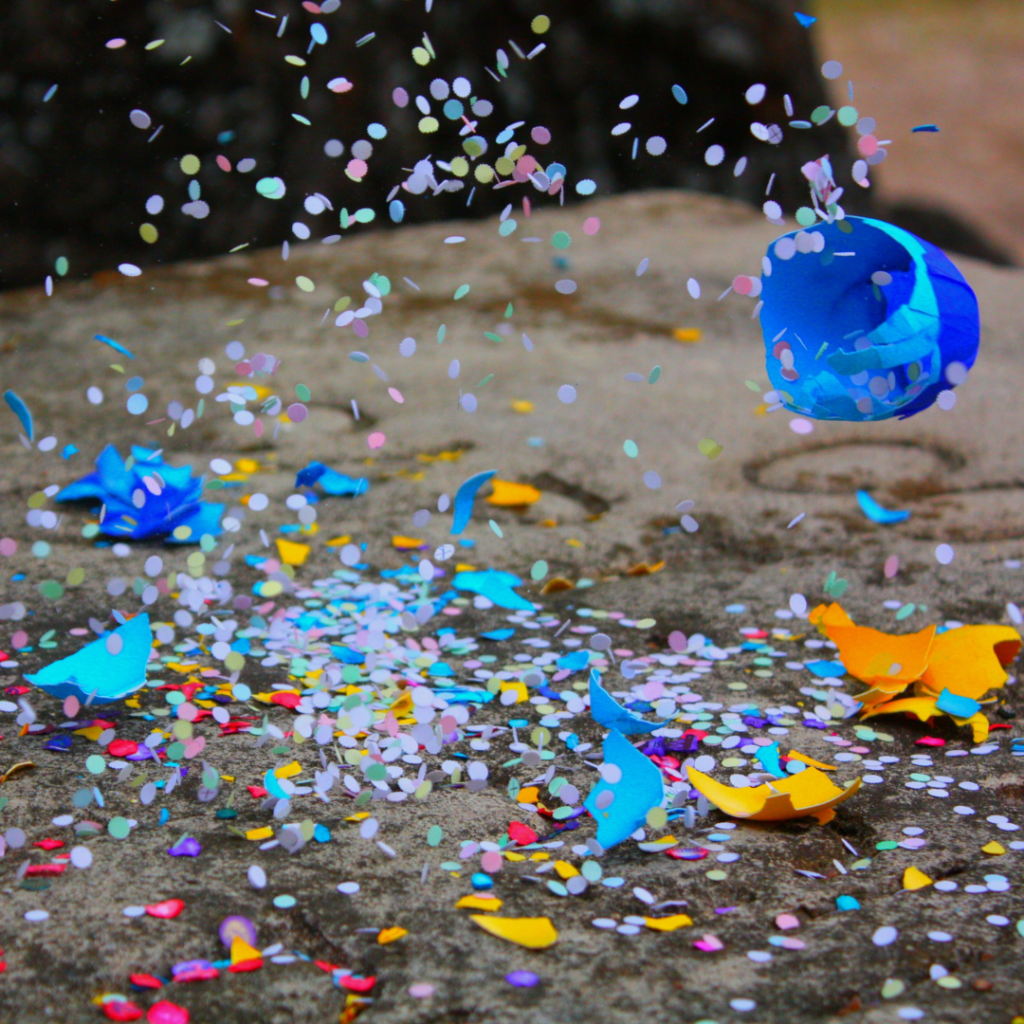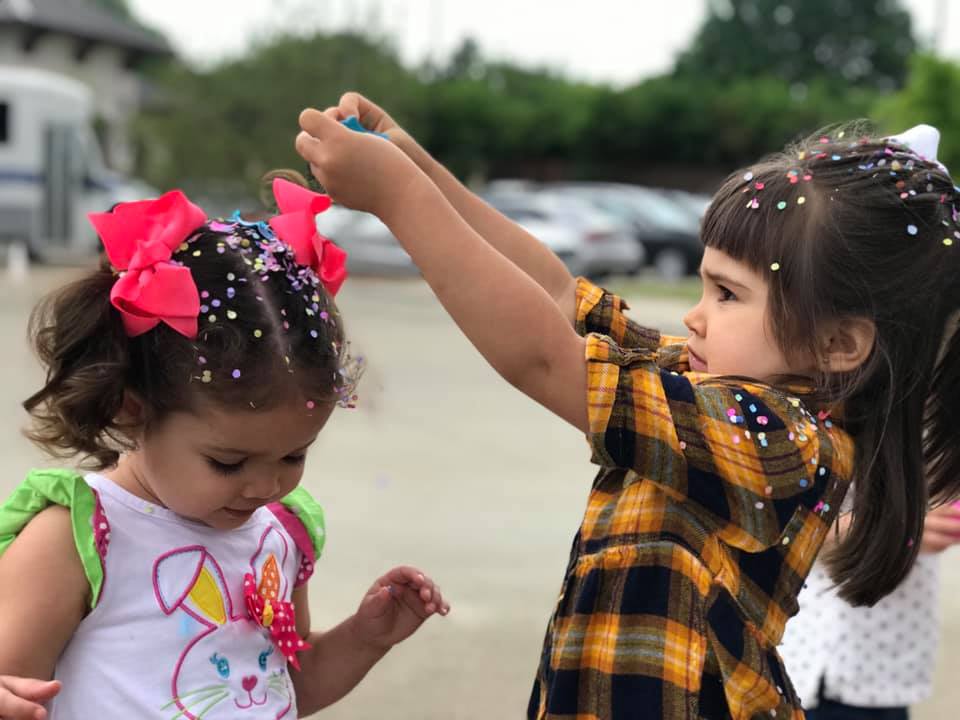Spring is in the air, and that means it’s time for fiestas! A fun part of many Latino celebrations is the tradition of making and cracking cascarones.
The word cascarón comes from the Spanish word for shell, cáscara. Cascarones are decorated eggshells that are filled with confetti or small treats. They’re crushed above people’s heads to shower them with good luck or affection. These festive confetti eggs are popular in parts of Mexico and the southwestern U.S., and you’ll see them at celebrations, especially around Easter, Cinco de Mayo, and sometimes at quinceañeras (15th birthday parties).

A Long History of Fun
The idea for cascarones is believed to have come to Spain from China in the 1800s, and then to the Americas. Originally, the eggshells were filled with expensive perfumed powders, enjoyed by the wealthy. However, in the 1860s, people in Mexico began filling them with confetti instead of powder, and their popularity spread widely.
A Community Tradition
Fun fact: Tens of thousands of cascarones are cracked over partygoers’ heads each April at a spring festival in San Antonio!
Fiesta San Antonio is an annual 11-day event. Celebrated since 1891, it began when a group of women gathered at the Alamo to remember the soldiers who fought in the Battles of the Alamo and San Jacinto. They threw flowers at each other to reenact the battles (which is why Fiesta is also known as the Festival of Flowers). The tradition has grown into today’s huge event which brings 2.5 million visitors out for the fun!
People dress in bright clothing, and many girls and women also wear crowns of crepe paper flowers. They cheer on floats in parades that take place in the streets and on the river. You’ll find plenty of cultural food, and entertainment from mariachis, dancers, and other performers. It’s fun, it’s loud, and it’s colorful!
A lot of the color comes from those 10,000+ cascarones! Teams of volunteers meet weekly all year to empty, clean, paint, and fill the eggshells. It’s clearly a labor of love, as some volunteers have been doing together for decades.
Try Them at Home!

Cascarones are a fun activity to sprinkle some joy at home (or outside!) with your kids! In many Latino households, it’s an annual tradition for families to make them together, but if this is new to your family, give them a try this Easter! Here are some basic instructions, and you’ll find a lot more tips and creative inspiration online.
What you’ll need:
- Newspapers or a plastic tablecloth to cover your work area.
- Bowls of Easter egg dyes or an egg-coloring kit
- A spoon
- Scissors
- Colored tissue paper
- Glue
- Confetti or other small fillings (for an eco-friendly version to be cracked outdoors, try birdseed!)
- Fresh eggs (not boiled)
Prep: Cover your work surface and have plenty of paper towels or wipes handy.
Crack those eggs (but just a little): Create a hole at the top of each egg. You may have to practice a few times to get the size right, but if you tap the tops of the eggs with a spoon a few times, you’ll get small cracks that you can carefully expand without cracking the sides of the egg. Try to remove no more than the top quarter of the eggshell.
Drain and save: Drain the egg whites and yolks into a bowl (you can use these later to bake Easter cookies!).
Rinse well: Rinse the empty shells well, inside and out. Place them upside down to dry on a cookie rack or in the egg carton.
Time for color: Dye the shells when they are dry, and let them dry completely again.
Add the filler: Fill the colored shells to the top with confetti (you can even use the paper dots from a hole punch or shredded paper from a shredding machine).
Seal them up!: Cut the tissue paper into small squares, just big enough to cover the holes in the shells. Make rings of glue around the edges of the holes and attach the tissue paper squares. Let the filled eggs dry completely.
Sneak Attack: Finally, sneak up on your friends and tap cascarones (gently!) on their heads to release a colorful surprise!
What Are Your Spring Traditions?
At Spanish Schoolhouse Pearland, this tradition is a highlight for our students! We’d love to hear about other spring or Easter traditions! Please share them with us in the comments section below!

